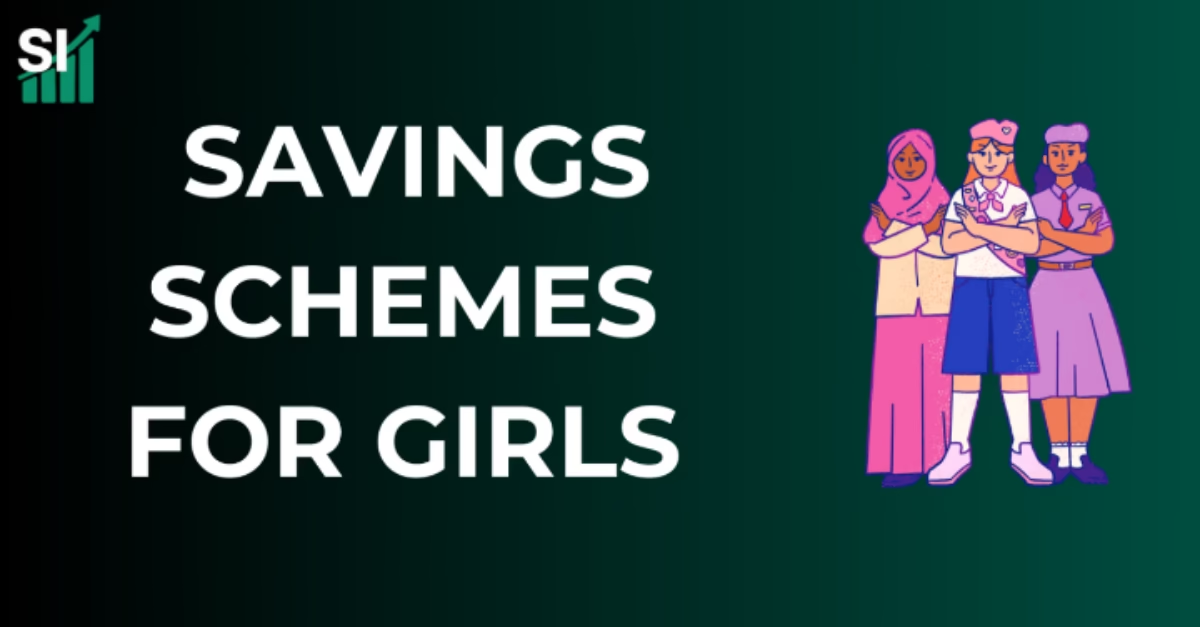Introduction to Women’s Savings Schemes in India
The financial landscape in India is evolving, especially regarding the empowerment of women and girls. Recognizing the unique challenges faced by women in accessing financial resources, the Indian government has initiated a variety of savings schemes aimed at enhancing their financial independence. These schemes are structured to meet the specific needs of women and often provide incentives that promote saving and investment for future security.
Women historically have had limited access to financial resources, which can hinder their ability to contribute to their family’s economy or pursue independent financial goals. By introducing government-backed savings schemes, India aims to bridge this gap and bolster the financial confidence of women. These initiatives not only encourage women to save but also educate them about the importance of financial literacy, thereby fostering a generation of economically empowered women.
Each scheme comes with unique features tailored to benefit women, such as preferential interest rates, lower minimum deposit requirements, and various tax benefits. Furthermore, these savings schemes often prioritize specific demographics, including low-income women, rural residents, and those belonging to marginalized communities, thereby ensuring inclusivity in financial growth.
Eligibility criteria are typically flexible, allowing a broader range of women to participate. Additionally, some schemes provide benefits directly aimed at furthering women’s education and health, reinforcing the idea that financial empowerment can have a ripple effect on overall societal well-being. By investing in women’s savings schemes, not only does the government aim to uplift individual lives, but it also seeks to create a robust economy that thrives on equality and inclusiveness.
Topics of Discussion
Sukanya Samriddhi Yojana (SSY)
The Sukanya Samriddhi Yojana (SSY) is a government-backed savings scheme specifically designed to benefit the girl child in India. Launched as part of the Beti Bachao Beti Padhao initiative, SSY aims to encourage savings for the education and marriage expenses of daughters. It is a highly sought-after scheme due to its attractive interest rates and substantial tax benefits.
To be eligible for the Sukanya Samriddhi account, the girl child must be below the age of ten at the time of account opening. An account can be opened for up to two girl children in a family, and in case of twins, a third account can be availed. The scheme offers an impressive interest rate that is currently fixed at 7.6% per annum, compounded annually. This rate is often higher than many other government savings schemes, making it an appealing option for parents aiming to secure their daughters’ futures. Furthermore, deposits can range from a minimum of ₹250 to a maximum of ₹1.5 lakh in a financial year, giving parents the flexibility to invest according to their financial capabilities.
The tenure for Sukanya Samriddhi Yojana is 21 years from the date of account opening or until the girl child gets married after the age of 18. The maturity proceeds are not only attractive but also tax-exempt under Section 80C of the Income Tax Act, providing additional savings advantages. Additionally, the interest earned and the maturity amount are also tax-free, making it a powerful tool for financial planning within families.
Ultimately, the Sukanya Samriddhi Yojana serves as an essential instrument in promoting the welfare of girls, ensuring that parents have the necessary funds for their daughters’ education and marriage, thereby contributing to societal advancement.
Mahila Samman Savings Certificate (MSSC)
The Mahila Samman Savings Certificate (MSSC) is a significant initiative aimed at promoting financial empowerment among women and girls in India. This government-backed savings scheme serves as a one-time offering catering specifically to this demographic, allowing them to build a secure financial future. The eligibility requirements for this scheme are straightforward, as it is primarily targeted at women and girls, thus encouraging their participation in financial activities.
The interest rate structure of the Mahila Samman Savings Certificate is attractive, reflecting the Indian government’s commitment to incentivizing savings among women. As of the latest updates, the certificate offers an interest rate that is higher than many traditional savings accounts, ensuring that the money invested grows over time. This aspect is particularly appealing to new savers looking to cultivate a habit of saving.
When it comes to deposit limits, the Mahila Samman Savings Certificate allows for a minimum investment of INR 1,000, with a maximum cap of INR 2 lakh. This range ensures accessibility for women from different financial backgrounds. Additionally, one noteworthy feature of this savings scheme is the option for partial withdrawal, providing a crucial degree of flexibility for account holders should they need to access funds in times of necessity.
The investment period for the MSSC is set at two years, aligning with the government’s broader goal of encouraging longer-term savings. However, it is important to note that the MSSC will not accept new investments after April 2025, marking a timeline for potential investors to consider. In summary, the Mahila Samman Savings Certificate not only offers an excellent opportunity for financial growth, but it also reinforces the importance of women’s financial independence in today’s society.
Public Provident Fund (PPF)
The Public Provident Fund (PPF) is a government-backed savings scheme that serves as a reliable and secure investment avenue for individuals, including women and girls. Initiated in 1968, the PPF aims to encourage savings among Indian citizens while providing them with tax benefits and attractive interest rates. To participate in this scheme, one needs to be a resident Indian, with no special eligibility criteria designated exclusively for women, making it accessible to all citizens.
The current interest rate on the PPF is set by the government periodically, ensuring it remains competitive and attractive for savers. As of October 2023, the interest rate stands at 7.1% per annum, compounded annually, which is significantly higher than the interest rates offered by regular savings accounts. This factor makes the PPF a compelling option for those looking to grow their savings consistently over the long term.
Individuals can open a PPF account with a minimum deposit of ₹500 and can contribute a maximum of ₹1.5 lakh in a financial year. The flexibility of making deposits either in lump sums or in installments throughout the year adds to the convenience for subscribers. Furthermore, the PPF boasts a lock-in period of 15 years, after which the funds can be withdrawn. Partial withdrawals are permitted after the completion of six years, making it a prudent option for those who may need access to funds mid-way through the maturity duration.
Another notable advantage of the PPF is that the contributions made qualify for tax deductions under Section 80C of the Income Tax Act. Additionally, the interest earned and the maturity amount are exempt from taxation, enhancing the overall returns on the investment. With its comprehensive benefits, the PPF remains a foundational savings product for women, offering them not just financial growth but also the security and stability associated with government-backed initiatives.
Post Office Monthly Income Scheme (POMIS)
The Post Office Monthly Income Scheme (POMIS) offers a reliable and structured financial option for women looking to secure a steady source of income through their savings. Designed to cater specifically to those who may prefer a fixed, regular income, this government-backed scheme allows individuals to make deposits while enjoying the benefit of consistent monthly payouts. The scheme is particularly appealing for women and girls who seek financial independence and stability through prudent savings.
To be eligible for POMIS, applicants need to be Indian residents, while there are no specific gender restrictions; the scheme has gained particular traction among women looking for reliable investment options. As of October 2023, the current interest rate for the Post Office Monthly Income Scheme stands at 6.6% per annum, which is paid out monthly. This interest rate makes it a competitive option among other savings products available in the market.
The minimum amount required to open a POMIS account is ₹1,500, while the maximum deposit limit is set at ₹4.5 lakh for single accounts and ₹9 lakh for joint accounts. These limits allow individuals to tailor their investments according to their financial capabilities. The tenure of the investment is fixed at five years, making it a medium-term savings avenue. Returns generated through the scheme are structured as fixed monthly payouts, which can help with budgeting and planning monthly expenses.
Investing in the Post Office Monthly Income Scheme is a pragmatic choice for women seeking financial security, as it ensures a guaranteed return on investment. The ease of access and simplicity of operation further enhance the allure of this scheme, making it a valuable addition to the array of savings options available for women and girls in India.
Senior Citizen Savings Scheme (SCSS)
The Senior Citizen Savings Scheme (SCSS) is a government-backed savings initiative aimed specifically at providing financial security to senior citizens, particularly women aged 60 and above. This scheme is designed to cater to the needs of older women who may require a stable income post-retirement. One of the standout features of SCSS is its attractive interest rate, which is typically higher than that of regular savings accounts. This offers a reliable income stream, making it an ideal choice for senior women seeking safe investment avenues.
Eligibility for SCSS is straightforward; women aged 60 and above can open an account. Additionally, women aged 55 and above who have retired under a voluntary retirement scheme are also eligible. This inclusivity ensures that a broad spectrum of senior women can benefit from the scheme. Once eligibility is established, one can deposit a minimum of INR 1,000, with a maximum limit of INR 15 lakhs. This flexibility in deposit limits allows women to tailor their investments according to their financial capacity and specific needs.
The maturity period for SCSS accounts is five years, which can be extended for an additional three years, providing a balanced option for those who prefer longer-term investments. Upon maturity, the principal amount is paid back, providing a secure way for women to generate funds in their later years. In essence, SCSS stands out as a prime choice for senior women looking to ensure a steady income while minimizing investment risks. This government-backed scheme not only supports financial independence but also enhances the quality of life as women age, aligning perfectly with their longer-term financial goals.
Goal Oriented SIP Calculator – 2025 | Free and Fast Online Tool | How to Use it
Find out how to use the Goal Oriented SIP Calculator to plan your investments for future financial goals. Includes lumpsum and SIP inputs.
Read More →National Pension System (NPS)
The National Pension System (NPS) is a government-backed initiative designed to provide a secure and portable retirement solution for all Indian citizens, including homemakers and working women. This scheme is a crucial component of the Indian government’s effort to encourage savings for retirement and ensure financial security in old age. The NPS functions as a market-linked pension plan, offering individuals the flexibility to choose their investment options based on their risk appetite.
Eligibility for the NPS is broad, as it caters to all Indian citizens aged between 18 and 65 years. This inclusiveness allows both working women and homemakers to participate, creating opportunities for women to build a substantial retirement corpus. The NPS offers several key features, including portability; participants can transfer their accounts from one city to another seamlessly, ensuring they retain their pension savings regardless of job changes or relocations.
Another significant aspect of the NPS is the variety of investment options available, allowing individuals to select between equity, corporate bonds, and government securities based on their investment preferences and risk tolerance. This flexibility empowers women to craft their financial futures effectively. Additionally, the NPS comes with tax benefits, as contributions made to the scheme qualify for tax deduction under section 80C of the Income Tax Act, which can lead to considerable savings on taxable income.
Building a robust retirement corpus through the National Pension System is of paramount importance for women, as it not only provides financial independence but also peace of mind during their golden years. With the right contributions and investment strategies, women can significantly enhance their financial security, paving the way for a stable and dignified retirement.
Comparative Analysis of Savings Schemes
When evaluating the various government-backed savings schemes available for women and girls in India, it is essential to consider their unique features, eligibility criteria, interest rates, and associated benefits. Each scheme is designed to meet different financial needs and empower its beneficiaries in distinct ways.
The Sukanya Samriddhi Yojana (SSY), for example, is tailored specifically for the girl child, with a strong emphasis on long-term savings. It offers an attractive interest rate, currently set at 7.6%, compounded annually, and mandates a minimum deposit to maintain the account’s active status. The scheme promotes financial independence and encourages parents to save for their daughters’ futures, particularly for education and marriage.
Conversely, the Pradhan Mantri Matru Vandana Yojana (PMMVY) is focused on providing financial support during pregnancy and childbirth. This scheme offers cash incentives to eligible pregnant and lactating women, contributing to their health and nutrition while also encouraging them to save and invest for their child’s future. The eligibility criteria for PMMVY vary, making it essential for potential beneficiaries to review the conditions before enrolling.
Similarly, the Mahila Udyam Nidhi Scheme aims to foster self-employment among women. It offers loans at preferential interest rates to support small businesses initiated by women entrepreneurs. The eligibility requirements focus on the applicant’s business plan and capacity for repayment, thus ensuring that the financial help provided aligns with their entrepreneurial aspirations.
In summary, understanding the characteristics of various savings schemes is vital to making informed decisions. Each has its merits, providing women and girls with essential tools for financial empowerment. By comparing these options, individuals can identify which scheme aligns best with their objectives, ensuring a more tailored approach to their financial future.
Factors to Consider Before Investing
When exploring the various government-backed savings schemes available for women and girls in India, it is paramount to consider several key factors that can affect investment decisions. Firstly, understanding one’s risk tolerance is critical. Different savings schemes carry varying levels of risk, and it is essential to choose one that aligns with an individual’s comfort level regarding potential losses versus gains. Women and girls must assess whether they are looking for a secure investment with guaranteed returns or are open to options that may offer higher returns with increased risk.
Moreover, it is vital to define specific investment goals. This involves determining the purpose of the investment—be it saving for education, starting a business, or building a retirement fund. Identifying clear objectives will guide individuals in selecting the most appropriate savings scheme that meets their financial aspirations. Furthermore, considering the liquidity needs associated with each scheme is important. Some investments may require a long-term commitment, while others may offer more immediate access to funds. Understanding how soon funds may be needed can significantly influence the decision-making process.
Additionally, potential investors should thoroughly comprehend the terms and conditions of each savings scheme. This includes understanding interest rates, penalties for early withdrawal, and the process of fund accessibility. A detailed examination of the scheme’s features helps in making an informed choice, ensuring that the selected savings vehicle is not only suitable but also beneficial in the long run. By weighing these factors thoughtfully, women and girls can secure their financial future through prudent investment choices. Ultimately, a thorough evaluation of individual circumstances and objectives will facilitate more informed and strategic financial decisions.
Conclusion and Call to Action
In light of the various government-backed savings schemes available for women and girls in India, it is evident that these initiatives play a crucial role in promoting financial empowerment and independence. The significance of investing in these schemes cannot be overstated, as they provide a structured way to save while also offering attractive returns on investment. By participating in these programs, women can not only secure their financial future but also contribute to the economic upliftment of their families and communities.
Each scheme discussed offers unique benefits tailored to the diverse needs of women and girls, from providing higher interest rates to enabling small deposits that encourage regular saving habits. In particular, schemes like the Sukanya Samriddhi Yojana and the Pradhan Mantri Matru Vandana Yojana embody the commitment of the Indian government to foster a conducive environment for women’s financial growth. The overall objective of these programs is to build a secure financial foundation that facilitates the achievement of personal and educational aspirations.
As readers reflect on the possibilities that these savings schemes present, it is essential to take proactive steps toward investing in one or more of these beneficial options. Researching the specific schemes that align with individual financial goals is an integral first step in this journey. Additionally, consulting financial advisors or participating in community workshops can further inform and enhance understanding of these options available. By taking informed action now, women and girls can pave the way for a stable and prosperous financial future, unlocking their potential to thrive in society.
Further Reading Suggetion:
Creative Strategies for a Building Wealth as a Homemaker
Building wealth at home starts with budgeting, cutting costs, and finding small income sources that improve family financial health.
Read More →


